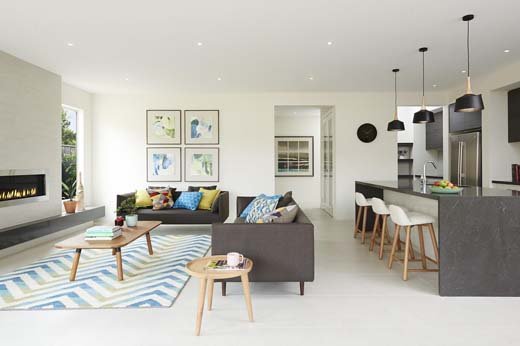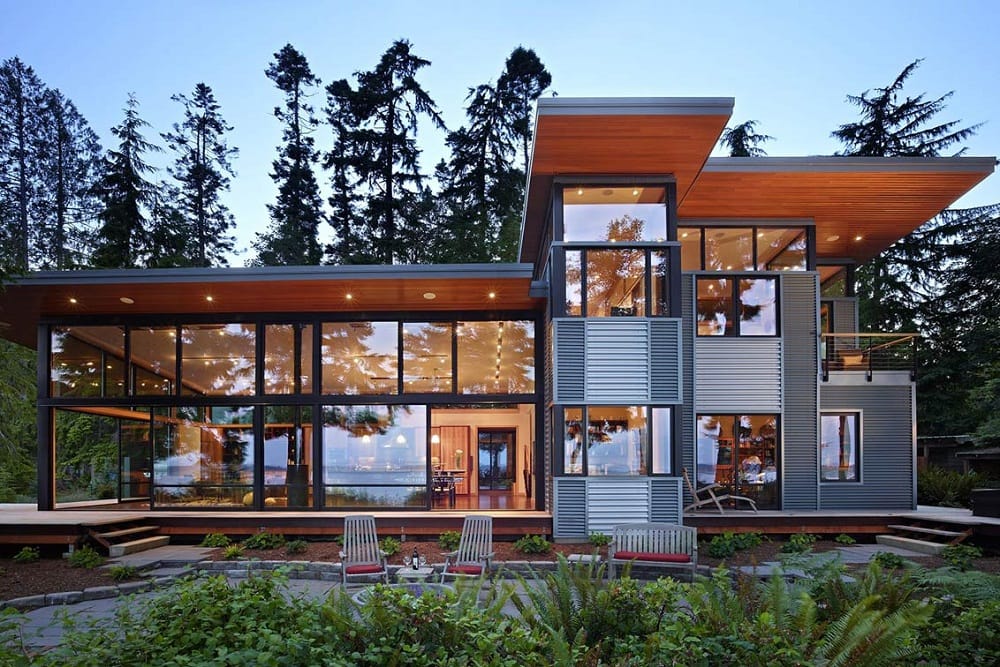In case you were wondering how buildings affect the environment – they are responsible for 76 percent of electricity usage and more than 40 percent of global carbon emissions, much more than industry and transportation. Having in mind these discouraging figures, it’s no wonder that everybody wants to build green these days.
The modern homes are functional, beautiful, and non-toxic for the environment and their occupants. They have a smart and attractive design and there’s plenty of room for creativity in that field. Modern builders have a myriad of options when it comes to construction and what’s best – homes come in all price ranges. Most importantly, sustainable homes save not only the environment and people’s health but money, too.
The future of housing surely looks bright – every government encourages switching to green building; even most home designers and owners do as well. Why wouldn’t they? Sustainability may sound like the latest “craze” in the world of architecture, but this trend is the one that people can only benefit from and it’s here to stay. If you wish to learn more about architecture, visit this site MCH Master for more information.
Passive Design

Not all green buildings have a passive design certificate, but this doesn’t mean they don’t have certain characteristics of it. What would be the simplest definition of a building that’s completely passively designed? It’s a building that takes full advantage of its surroundings and climate, maintaining a perfectly comfortable inner temperature and reducing the need for auxiliary heating or cooling.
Just imagine the opposite of an energy-consuming, randomly built home. A passive design building is anything but. The importance of such smart design is enormous as achieving thermal comfort reduces the heating and cooling bills, affecting the greenhouse gas emission reduction in the long (or not so long) run. Your budget will be the first to reflect these changes, as the use of energy can be reduced up to 90 percent. Simply Switch will help you a lot in comparing your energy bills costs effectively.
Passive design includes several things: careful positioning, designing the envelope (roof, walls, floors and windows), effective shading, smart insulation, passive heating and cooling and much more. All these requirements don’t imply a design that’s deprived of luxury. A fair share of such smartly conceived houses are wonderful, extremely spacious and of cutting-edge design. The number of houses with a full passive design certificate is on the rise.
Energy Efficiency

The terms of passive design and energy efficiency are interconnected as one leads to the other. Practices such as glazing, adding high-quality insulation, smart positioning of the home and passive heating and cooling will certainly bring significant savings of energy.
For instance, double glazed windows and doors bring lots of natural light into the house interior and they should be positioned wisely so that they use the best of the passive cooling and heating. They have excellent sound and heat insulation properties and no home of the future should be built without them. Most people who decide to renovate their homes nowadays opt for installing double glazed windows first.
Even smaller (and cheaper) changes can bring huge benefits. Take LED lights for example – such lamps have a lifespan and efficiency that is several times better than incandescent lamps and fluorescent lamps. There has been much improvement in technology and we are witnesses to more and more energy efficient appliances and devices. Therefore, it’s quite expected that an increasing number of people are switching to these modern solutions.
Sustainable Materials

Passive design and energy efficiency may be the basis of sustainable building, but there can be no true green home without using the right materials. Natural building includes non-toxic, sustainable, recycled and recyclable construction materials, and the options are countless: bamboo, adobe, cork, straw bale, baked earth, rammed earth or clay, etc.
I am a big fan of wooden surfaces and I try to have as many wooden surfaces in my house as I can. However, I try to avoid hardwood trees and use bamboo, cork and other, fast renewable woods. Of course, I never use wood without a proper certificate that proves that it’s local and sustainably sourced. Always have in mind that locally manufactured materials minimize the cost of transportation.
Sometimes, you’ll have a chance to use salvaged materials from a previous construction site so don’t hesitate to use this opportunity. The real futuristic trend includes awareness of the need to reduce the amount of waste. Although the deconstruction process may seem costly, don’t worry – it’ll pay off thanks to tax deductions.
After the deconstruction, the salvaged material can be used or donated. Even scrap materials that we would normally consider garbage are extremely useful in green building (beer cans, PET bottles, automobile tires). All these materials can be incorporated into a modern house perfectly, with a little bit of creativity. I’ll give a wonderful example – The Scrap House, located in San Francisco, made entirely from materials such as street signs, phone books and other “garbage”.
Green Interior Design

Sustainable building is also reflected in the interior design and the choice of household appliances, devices and furniture. Most appliances used in the household should be those that spend less electricity or water than usual. I have already mentioned LED lights as a great example of an energy saving device (fluorescents are great, too), but there is an abundance of sustainable options to choose from.
The main goal of modern and sustainable interior design is to increase both the room’s functionality and beauty, having in mind the occupants’ well-being. For instance, my vision for a perfect home office would be a spacious room that’s full of natural light, equipped with minimalist furniture and lots of plant life. Furniture should be made from sustainably sourced wood or recyclable/recycled materials.
Of course, the same can be applied to all rooms in the house. Bathrooms can also be turned into green areas in several easy steps. Get recycled paper, a dual toilet flusher, DIY natural air fresheners, aerated shower heads and an improved, energy-saving hot water system.
Additional Green Features
For those who think big, sustainable building is not limited to green interior and passive design. Why not add a few helpful features to your home that will help you to produce your own energy, collect your own water, grow your own organic food and have your own private paradise in the backyard?
This may be a bit hard for those who live in apartments, but if you have a spacious house – the sky’s the limit and the upgrades are endless: solar panels, green roofs and walls, natural swimming pools, rainwater harvesting tanks, organic gardens…
Solar energy has been around for quite some time, but now, it has become accessible to more people. Installing solar panels is a perfect idea if you want to generate your own electricity, power household appliances or heat your water.
Not only are solar panels extremely and multiply beneficial, they may be aesthetically pleasing as well, giving your home an interesting, futuristic look. Those who would prefer invisible solar panels will probably have a chance to install them soon, thanks to the latest research.

